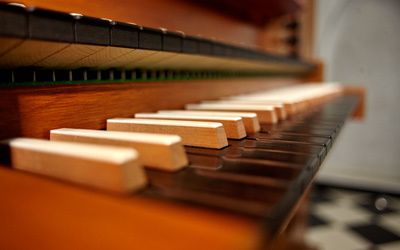TO THE GLORY OF GOD
THE CHURCHES OF VLADIVOSTOK
The nationalities of Vladivostok and Primorye residents at the beginnings of the region’s history are extremely varied. The region was populated by resettlement from different parts of the Russian Empire: Ukraine, Moldova, the Baltic States, Poland, and Finland. Citizens from many foreign countries actively participated in developing the area, which led to a group of citizens with a patchwork of religious beliefs.
However, constructing churches requires significant financial resources, which generally only the Christian community could afford: Russian Orthodox, Catholics and Protestants. There are individual churches built before the Russian revolution, which avoided destruction and survived the socialist era (during which time they were not used as churches but for various other purposes), still standing today. There are numerous others built in the past 25 years.
RUSSIAN ORTHODOX CHURCHES
There are about 40 Russian Orthodox chapels in Vladivostok. The biggest and most majestic is the Church of the Intercession of the Mother of God.
The first church in honor of the Intercession of the Mother of God was built in 1902 on the territory of the town cemetery, the resting place of several generations of Vladivostok and Primorye residents. The five-domed Church of the Intercession was designed for seven hundred people. After the establishment of Soviet power in 1923, the cemetery was closed. In 1934, construction began on a city culture and recreation park. A year later, the Church of the Intercession was blown up.
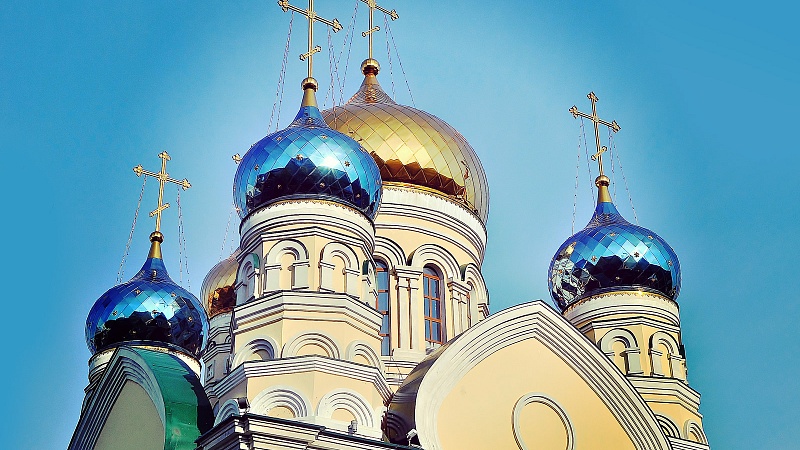
Bricks from the destroyed church were used in construction of the Pedagogical Institute (the future Far Eastern National University). The twisted five-meter staircase that led to the church's bell tower was moved to the boiler room of the combined heating and power plant. A monument to Lenin was built on the foundation of the demolished church.
Donations were collected in 1991 to restore the Church of the Intercession. However, its construction was delayed for various reasons. Finally, construction began in September 2004. In March 2007, 10 bells were consecrated, and installed in the bell tower on April 3, with the largest weighing 1,300 kg.
The new church can seat up to 1,000 people, and its appearance is as close as possible to the five-domed original. The Church Square is 600 square meters, and its height with the cross is 40 meters.
CATHOLIC CHURCH OF THE MOST HOLY MOTHER OF GOD
There were many Polish residents of Vladivostok in the late 19th to early 20th century. In 1890 in the South Primorye region, 2,610 people stated Polish was their native language. Of these, 954 were in Vladivostok. Beginning in 1885, small wooden churches were built in the city, and it was not until 1909 that construction was begun on a large Catholic church. The neo-gothic style building was designed by Andrew Gvozdievsky in 1921 and to this day is a real gem of Vladivostok, giving a unique view of the multicultural city.
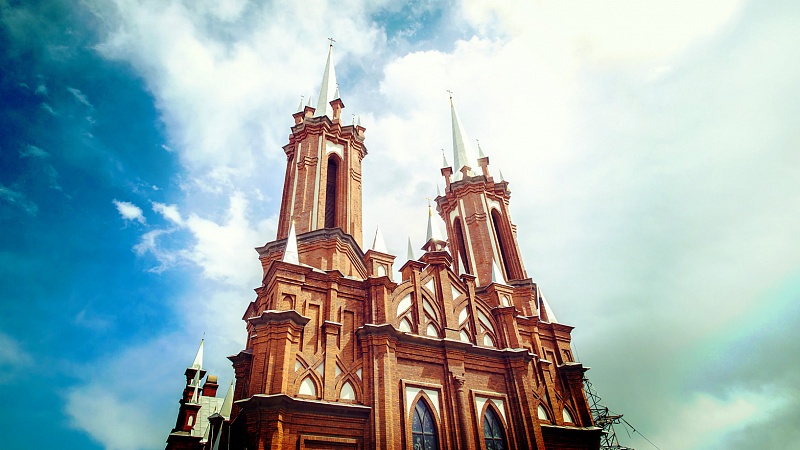
The church served the Catholic believers of Vladivostok until 1935, when it was closed. The church then housed the Primorsky Kray State Archives. The church's interior was rebuilt, the interior decor and unique stained glass windows destroyed.
It was only in 1993 that the former Catholic church was transferred to the Catholic diocese of Vladivostok. On January 1, 1994, in solemnity of the Most Holy Mary, Mother of God the Catholic parish was finally handed the keys to the church. The church's restoration and reconstruction lasted until 2010.
The highlight of the church is a pipe organ, whose sound creates an indescribable atmosphere.
ST. PAUL'S LUTHERAN CHURCH
Built from 1907 to 1909 by the German architect Georg Junghendel, the church is a wonderful example of Gothic architecture. The Lutheran community of Vladivostok was plentiful and very influential, consisting of the higher ranks of the officer corps, business leaders, and government officials.
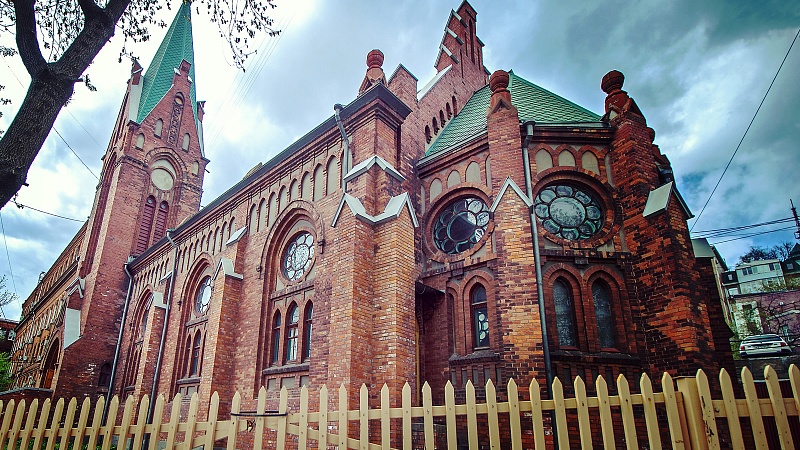
There were many Lutherans, whose names are inextricably linked with the city's history.
Architect George Junghendel with this building exemplified the classic look of a church in the style of late Gothic Northern-European architecture. The kirch (German for the church) was built on a hill, and has become a unique architectural crown of Pushkinskaya Street. The principal amount to construct the church, made of brick brought from Germany, was paid for by the Kunst and Albers trading company.
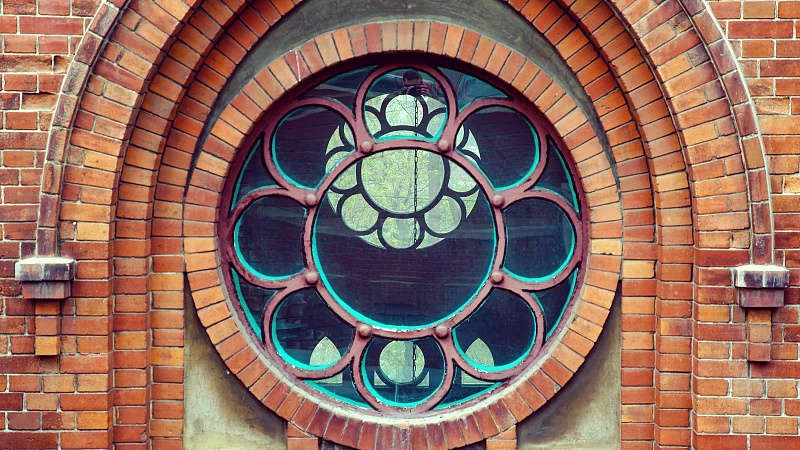
In 1935 the church was closed. At different times, the church was used as a club for elders of the Pacific Fleet, the Gorky Cinema, and the Military History Museum of the Pacific Fleet. Weapons and military equipment exhibits were placed at the entrance of the church, and children often came to the Lutheran church to "climb on the gun".
On September 16, 1997, the historic church on 14 Pushkinskaya Street was transferred to the community for free and unlimited use. In that same year, Germany awarded it the status of "Monument of German Culture Abroad".
Currently, the church of St. Paul is one of Vladivostok's cultural centers. Organ concerts and charity events are held here in addition to church services.
If you liked this article, share it with friends:
Come to Vladivostok!
We recommend
History and Culture
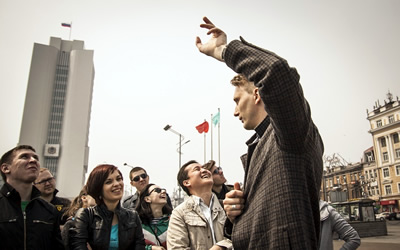
Sightseeing bureau "City Time"
Discover Vladivostok through our bus, cycle, and — best of all — walking tours, led by the most knowledgeable tour guides in the city.

Walking in Vladivostok, route 2 (along the sea)
Arbat (Admiral Fokin Street) – Waterfront Sports Harbor – Aquarium (Oceanarium) – Museum "Vladivostok Fortress" – Batareynaya Street – Sister Cities Square – Music Bar "Mumiy Troll"
